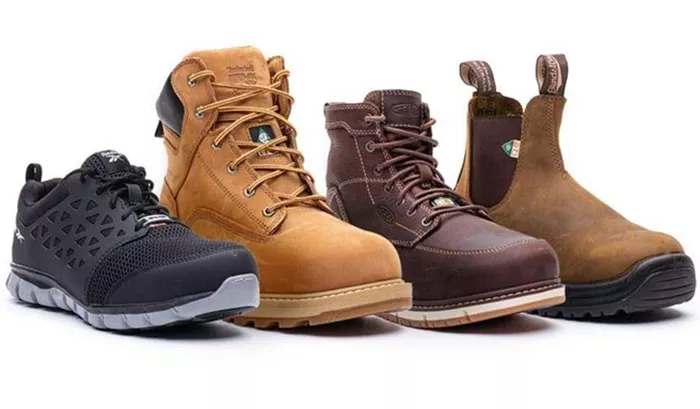Work shoes are more than just a part of the uniform; they are crucial for ensuring safety and comfort in various professional environments. Whether working in construction, healthcare, or any industry requiring prolonged standing or walking, the right pair of work shoes can make a significant difference in both productivity and well-being. This assessment will delve into how durability and safety features play a pivotal role in choosing the best work shoes. We will explore how different models measure up in real-world conditions, providing you with a comprehensive guide to make an informed choice.
Criteria for Evaluation
Evaluating work shoes involves several critical criteria to ensure they meet both safety and durability standards. We consider the quality of materials used, such as the type of leather or synthetic fabric, and the construction techniques, including stitching and sole attachment methods. Safety features are assessed based on their compliance with industry standards, such as ASTM or ANSI certifications. Additionally, we examine the shoe’s overall design for ergonomic support, cushioning, and impact resistance. Each criterion is crucial in determining how well the shoe performs under various work conditions.
Top Contenders
Among the myriad of work shoes available, certain models consistently stand out for their exceptional performance in both durability and safety. Brands like Timberland PRO, Red Wing, and Caterpillar have earned top marks for their robust construction and reliable safety features. For instance, Timberland PRO’s Anti-Fatigue Technology offers superior comfort and support, while Red Wing’s steel-toe boots are renowned for their longevity and impact resistance. This section will highlight these top contenders, providing detailed descriptions and key features that set them apart in the competitive landscape of work footwear.
Durability Analysis
Durability is a critical factor in work shoes, as they must endure harsh conditions such as rough terrains, chemicals, and constant use. This analysis focuses on how well different shoes withstand wear and tear over time. For example, shoes with full-grain leather uppers and rugged rubber outsoles tend to offer superior durability compared to those with synthetic materials. We will examine factors like sole integrity, upper material resistance, and overall construction quality. Through a combination of laboratory tests and real-world usage scenarios, we will assess how these shoes perform under stress and how long they can be expected to last.
See also: Truewerk: The Ultimate Blend Of Functionality And Fashion In Workwear
Safety Features
Safety features are paramount in work shoes to protect against workplace hazards. This section will delve into various safety elements such as slip resistance, which prevents accidents on wet or oily surfaces; toe protection, including steel or composite toe caps; and puncture resistance to guard against sharp objects. Additionally, we will explore electrical hazard protection for jobs involving exposure to live circuits. Each feature is evaluated for its effectiveness in mitigating specific risks, and we will provide insights into how well each shoe meets the necessary safety standards.
Comfort and Fit
While safety and durability are crucial, comfort cannot be overlooked, as it impacts overall work performance and foot health. This section will assess how well the shoes balance safety features with comfort. Key factors include cushioning, arch support, and the breathability of materials. Proper fit is also essential to prevent issues such as blisters and foot fatigue. We will review how different models perform in terms of adjustability, padding, and overall ergonomic design, ensuring that they not only protect but also provide a comfortable wearing experience throughout long workdays.
User Reviews and Feedback
Real-world user feedback offers valuable insights into the practical performance of work shoes. This section will summarize reviews from professionals across various industries who have tested the shoes in their daily work environments. We will highlight both positive and negative feedback to provide a balanced perspective on each model’s performance. This includes considerations such as the shoe’s longevity, comfort levels over extended use, and effectiveness of safety features. User reviews can reveal common issues or praises that may not be apparent from product specifications alone.
Cost vs. Value
The cost of work shoes is a significant consideration, especially when balancing budget constraints with the need for quality. This section will analyze the cost versus value of different models, examining whether higher-priced shoes offer a proportionate increase in durability and safety. We will compare the initial investment with long-term benefits, such as extended lifespan and reduced injury risk. By evaluating the overall value provided by each shoe, readers can make a more informed decision about which models offer the best return on investment.
Conclusion
In conclusion, choosing the right work shoes involves a careful evaluation of durability, safety, and comfort. This assessment has provided a comprehensive overview of how various models perform in these critical areas, highlighting top contenders and key features to look for. By considering the factors discussed, including real-world user feedback and cost versus value, you can select work shoes that not only meet industry standards but also enhance your overall work experience. Invest wisely in your footwear to ensure safety, comfort, and longevity in your professional endeavors.
Related Topics:

